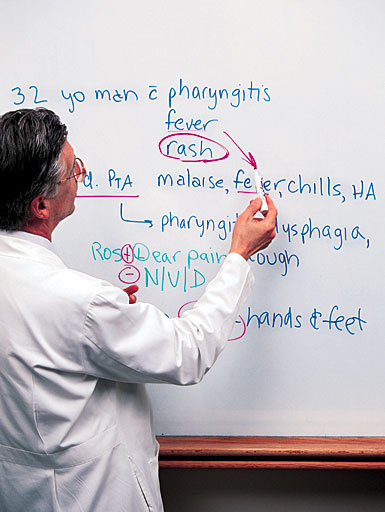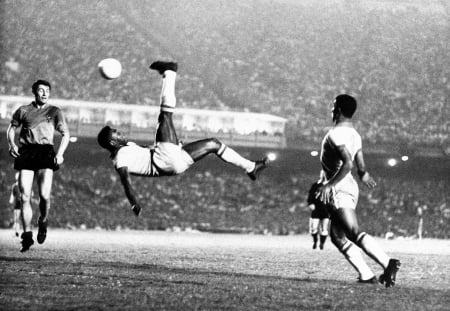A few years ago I came across a book by Atul Guwande entitled simply, Better. It is a lovely, easy read where Guwande takes on a number of different issues in the field of medicine and describes how the profession, and the individuals in it, have gotten better at what they do. I have found myself attracted to books like this because I have this sneaking feeling that my own profession doesn't actually HAVE to get better; there is no compelling impetus. In the private school world you can simply accept "statistically smart" kids and they will still be smart four (or more) years later. What evidence do we have that we, as teachers, actually were important in growth? And then what about the students who don't really "make it" can be removed from the institution as if it was something wrong with them that impelled the separation.
I sometimes wonder what it would be like for a school to regularly engage in what doctors call an "M and M" session- Morbidity and Mortality. In these sessions doctors look over a specific cases that are matters of life and death and figure out what happened. The best sessions engage in a self-implication on the role of the hospital and the individual doctors in what happened. But it is all in the name of getting better. I sometimes wonder what might be an equivalent activity in education; certainly the traditional Disciplinary Committee report is not it.

But one Guwande's other ideas struck me as being something that resonated with my own career--being a "positive deviant." For Guwande there are five activities you can engage in that will help you get better--"ask an unscripted question, count something, write something, don't complain and embrace change." This list reminded me of what I have come to consider the five layers of teaching ("the 5 S's") that I have learned over the decades; it also gives me a chance to reflect on where those came from and why I stayed in teaching. Teaching in a way that is experience-based means you are operating simultaneously on five different layers while class is happening; the more you can accomplish this, I think, the better you get as a teacher.
(S)UBJECT
Before I walked into my first classroom as a teacher I knew that I didn't know enough about what I was teaching. It does not take long to realize that being a history major in college doesn't equip you with enough content to teach a high school history course. So, for ten years I would take a period in American history and overemphasize it in my curriculum design. At the end of the decade, I had a pretty good grasp of the historiography of one course I was teaching.
But trouble had occurred way before the end of that decade. I began to wonder if my students retained anything I was teaching--or, exactly what did they retain a few months later? So I asked a class of seniors whom I had taught the previous year to take the final exam again half way through their senior year. The results caused the first of many dark nights of the soul in my teaching life. The new results were terrible, in some cases failing. Here was the way I framed my dilemma, "Am I going to spend the next thirty years of my life teaching people how to pass a test in June that they may not be able to pass in December of the same year? Clearly, something had to change, or it was time to try a new profession.
(S)KILLS
Luckily, two things happened so that I did not join the hordes of teachers who left for law school or business school after three years or so because they just could not see teaching the same thing for forty more years. First, I truly believed in what I was teaching. History, Literature, Philosophy, Humanities, American Studies, Religion helped shape one's life, I thought. And each year I could team-teach them with other teachers in interdisciplinary courses in the spring.
Second, the people I was coaching in soccer and lacrosse were exactly the same people I was teaching in History and English, and this led to the next realization and the second "S"--skills. What I could not help but notice was that those same students developed rapidly on my teams and nowhere near as quickly or as deeply in my classes. Why, I wondered? I started asking and people would tell me that it was the nature of the activity; they "liked" soccer, they didn't like "English." Perhaps true, but what if I were also culpable? Perhaps it was time for an "M and M session?"
And so I set myself an experiment, I would teach the way I coached and see what happened. What was different? Well, as the title of this section indicates, I realized that my coaching was as much skills based as it was content based. But, if I were honest, the dominant skill that was tested in my classes was short term memory. When I said practice "critical thinking" I didn't have anywhere near the precision in my explanation that I did when I said "pass the ball." In the latter, I had multiple techniques; I had algorithms: I had options. And we had practice sessions solely devoted to mastering those skills. Not so for the amorphous command-- "think critically."

And so I began to think about what skills were embedded in what content, and how could I tease those skills out, name them, and then present them in an organized fashion that mimicked what I did as a coach? This provided a second layer to my teaching that was not only more complicated, but vastly more successful. And the students not only came away with a more varied skill set, but they seemed to have a marginally better grasp on the subject.
But best of all, I realized, I had changed the tone of the classroom from a noun to a verb. We were DOING things, not just studying them. They weren't just studying history, they were becoming historians.
But as I team-taught with master teachers, I knew that there was more going on in their classrooms than in mine, and that was what I needed to figure out. The next blog post will suss out three more "S's" that have taught me to make the transition from learning how to teach to being fascinated with how people learn.
No comments:
Post a Comment